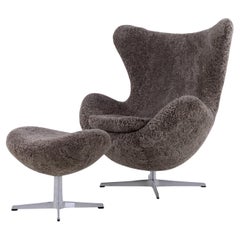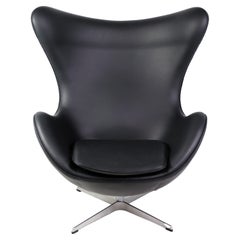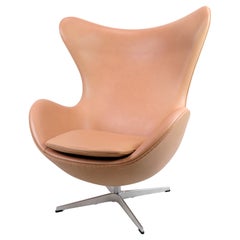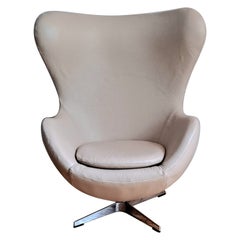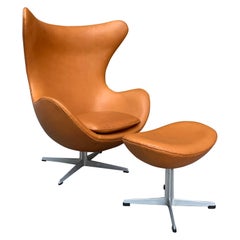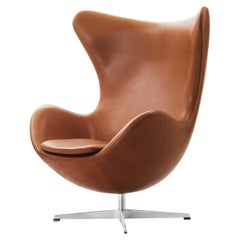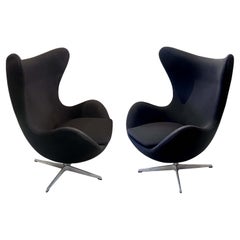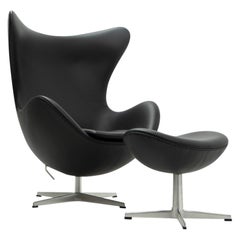The Egg Chair
Mid-20th Century Danish Mid-Century Modern Lounge Chairs
Lambskin
Vintage 1950s Danish Scandinavian Modern Armchairs
Aluminum
Late 20th Century Danish Mid-Century Modern Armchairs
Aluminum
21st Century and Contemporary Danish Mid-Century Modern Lounge Chairs
Aluminum
Vintage 1960s Danish Mid-Century Modern Lounge Chairs
Metal
Mid-20th Century Danish Mid-Century Modern Lounge Chairs
Aluminum
21st Century and Contemporary Polish Scandinavian Modern Lounge Chairs
Aluminum
Mid-20th Century Polish Mid-Century Modern Swivel Chairs
Steel
Early 2000s Danish Mid-Century Modern Chairs
Metal
Vintage 1960s Danish Scandinavian Modern Lounge Chairs
Aluminum
Vintage 1980s Danish Lounge Chairs
Aluminum
Vintage 1950s Danish Scandinavian Modern Lounge Chairs
Aluminum
21st Century and Contemporary Danish Scandinavian Modern Lounge Chairs
Metal, Aluminum
Vintage 1970s Danish Lounge Chairs
Aluminum
21st Century and Contemporary Danish Scandinavian Modern Lounge Chairs
Metal, Aluminum
21st Century and Contemporary Danish Scandinavian Modern Lounge Chairs
Metal, Aluminum
21st Century and Contemporary Danish Scandinavian Modern Lounge Chairs
Metal, Aluminum
21st Century and Contemporary Danish Scandinavian Modern Lounge Chairs
Metal, Aluminum
21st Century and Contemporary Danish Scandinavian Modern Lounge Chairs
Metal, Aluminum
21st Century and Contemporary Danish Scandinavian Modern Lounge Chairs
Metal, Aluminum
Vintage 1950s Danish Mid-Century Modern Chairs
Leather
Mid-20th Century Danish Scandinavian Modern Lounge Chairs
Fabric
21st Century and Contemporary Danish Scandinavian Modern Lounge Chairs
Metal, Aluminum
Vintage 1960s Danish Mid-Century Modern Swivel Chairs
Aluminum
2010s Polish Mid-Century Modern Lounge Chairs
Aluminum
Mid-20th Century American Space Age Chairs
Metal, Iron
Mid-20th Century Danish Mid-Century Modern Chairs
Teak
21st Century and Contemporary Danish Scandinavian Modern Lounge Chairs
Metal, Aluminum
21st Century and Contemporary Danish Scandinavian Modern Lounge Chairs
Metal, Aluminum
Vintage 1960s Danish Mid-Century Modern Armchairs
Leather
Vintage 1950s Danish Mid-Century Modern Armchairs
Aluminum
Mid-20th Century Modern Chairs
Faux Leather
Vintage 1950s Danish Scandinavian Modern Lounge Chairs
Leather
Late 20th Century European Space Age Chairs
Upholstery, Plastic
2010s South African Modern Swivel Chairs
Steel, Stainless Steel
21st Century and Contemporary Danish Mid-Century Modern Lounge Chairs
Aluminum
Mid-20th Century Mid-Century Modern Lounge Chairs
Upholstery
Vintage 1920s Italian Modern Rocking Chairs
Rattan, Wood
Antique 1860s German Mid-Century Modern Lounge Chairs
Fabric, Plastic, Polyester
Vintage 1970s Mid-Century Modern Swivel Chairs
Iron
Late 20th Century Chairs
Epoxy Resin
20th Century Danish Lounge Chairs
Upholstery
Vintage 1980s Italian Mid-Century Modern Lounge Chairs
Bamboo, Rattan
21st Century and Contemporary Portuguese Modern Lounge Chairs
Foam
Early 2000s Danish Mid-Century Modern Armchairs
Aluminum
2010s Danish Post-Modern Lounge Chairs
Upholstery, Teak
2010s Danish Post-Modern Lounge Chairs
Upholstery, Teak
2010s Danish Post-Modern Lounge Chairs
Upholstery, Teak
2010s Danish Post-Modern Lounge Chairs
Upholstery, Teak
Mid-20th Century Danish Scandinavian Modern Swivel Chairs
Cowhide
2010s Organic Modern Chairs
Steel
2010s South African Modern Chairs
Steel
2010s Organic Modern Chairs
Steel
2010s Organic Modern Chairs
Steel
Vintage 1950s Italian Mid-Century Modern Lounge Chairs
Steel
2010s Danish Post-Modern Lounge Chairs
Upholstery, Teak
2010s Danish Post-Modern Lounge Chairs
Sheepskin, Upholstery, Teak
2010s Danish Post-Modern Lounge Chairs
Sheepskin, Upholstery, Teak
- 1
The Egg Chair For Sale on 1stDibs
How Much is a The Egg Chair?
Finding the Right Seating for You
With entire areas of our homes reserved for “sitting rooms,” the value of quality antique and vintage seating cannot be overstated.
Fortunately, the design of side chairs, armchairs and other lounge furniture — since what were, quite literally, the early perches of our ancestors — has evolved considerably.
Among the earliest standard seating furniture were stools. Egyptian stools, for example, designed for one person with no seat back, were x-shaped and typically folded to be tucked away. These rudimentary chairs informed the design of Greek and Roman stools, all of which were a long way from Sori Yanagi's Butterfly stool or Alvar Aalto's Stool 60. In the 18th century and earlier, seats with backs and armrests were largely reserved for high nobility.
The seating of today is more inclusive but the style and placement of chairs can still make a statement. Antique desk chairs and armchairs designed in the style of Louis XV, which eventually included painted furniture and were often made of rare woods, feature prominently curved legs as well as Chinese themes and varied ornaments. Much like the thrones of fairy tales and the regency, elegant lounges crafted in the Louis XV style convey wealth and prestige. In the kitchen, the dining chair placed at the head of the table is typically reserved for the head of the household or a revered guest.
Of course, with luxurious vintage or antique furnishings, every chair can seem like the best seat in the house. Whether your preference is stretching out on a plush sofa, such as the Serpentine, designed by Vladimir Kagan, or cozying up in a vintage wingback chair, there is likely to be a comfy classic or contemporary gem for you on 1stDibs.
With respect to the latest obsessions in design, cane seating has been cropping up everywhere, from sleek armchairs to lounge chairs, while bouclé fabric, a staple of modern furniture design, can be seen in mid-century modern, Scandinavian modern and Hollywood Regency furniture styles.
Admirers of the sophisticated craftsmanship and dark woods frequently associated with mid-century modern seating can find timeless furnishings in our expansive collection of lounge chairs, dining chairs and other items — whether they’re vintage editions or alluring official reproductions of iconic designs from the likes of Hans Wegner or from Charles and Ray Eames. Shop our inventory of Egg chairs, designed in 1958 by Arne Jacobsen, the Florence Knoll lounge chair and more.
No matter your style, the collection of unique chairs, sofas and other seating on 1stDibs is surely worthy of a standing ovation.
- When did the Egg chair come out?1 Answer1stDibs ExpertMarch 22, 2022The Egg chair came out in 1959. Danish designer Arne Jacobsen created it along with a number of other famous mid-century modern chairs, including the Series 7, the Swan and the Ant. Find a collection of Egg chairs on 1stDibs.
- Who invented the Egg chair?1 Answer1stDibs ExpertApril 22, 2024Arne Jacobsen invented the Egg chair. Designed in 1958 for the SAS Royal Hotel in Copenhagen, it is a Scandinavian classic that has over the years become a fixture of corporate offices. The Egg chair is notable for its overtly organic appearance, which Jacobsen achieved with craft-based padding and upholstery finishing. Unlike the furniture maker's previous range of shell chairs designed in laminated wood for Fritz Hansen, the Egg reflected a soulful new vision of modernity. Its finished shells were made of fiberglass-reinforced polyurethane foam, padded with cast latex foam rubber and then upholstered with leather (or, in the cost-conscious hotel's case, fabric). Shop a range of Arne Jacobsen Egg chairs on 1stDibs.
- 1stDibs ExpertMay 5, 2023Whether Egg chairs are actually comfortable is largely a matter of personal opinion. However, many people find that the curved shape of the frame provides plenty of support. Shop a collection of Egg chairs on 1stDibs.
- 1stDibs ExpertApril 5, 2022To tell if an Arne Jacobsen egg chair is real, check for the label. Newer models have a Republic of Fritz Hansen label attached to the fabric, older models have them attached to the base of the chair. You can also look for a sticker on the cylinder that attaches to the base with a Fritz Hansen label and a four-digit date. Shop a large collection of Arne Jacobsen and other egg chairs from some of the world’s top sellers on 1stDibs.
- 1stDibs ExpertApril 5, 2022To hang an egg chair from the ceiling, you must drill into a joist and install a hook. Then, attach a chain to the top of the chair and hang it from the hook. Having an experienced handyman tackle the job for you can help to ensure secure installation and reduce the risk of damaging your ceiling. On 1stDibs, shop a selection of egg chairs.
- How much is an egg chair worth?1 Answer1stDibs ExpertFebruary 22, 2021An egg chair can be worth up to $20,000. The price of an egg chair depends on the condition, upholstery material, and model.
- 1stDibs ExpertApril 5, 2022There are several different designs of egg-shaped chairs. Some of the most famous are Henrik Thor-Larsen’s Ovalia Egg Chair from 1968 and Arne Jacobsen’s Egg Chair from 1959. On 1stDibs, you’ll find a collection of egg-shaped chairs from some of the world’s top sellers.
- 1stDibs ExpertFebruary 13, 2023The original Egg chair was designed by Arne Jacobsen for the SAS Royal Hotel in Copenhagen in 1958. It was notable for its overtly organic appearance, which Jacobsen achieved with craft-based padding and upholstery finishing. With the Egg chair, Jacobsen continued his ongoing experimentation with synthetic materials. First, he devised small-scale clay models in his garage. The prototypes' finished shells were made of fiberglass-reinforced polyurethane foam, padded with cast latex foam rubber and then upholstered with leather — or, in the cost-conscious hotel’s case, fabric. Today, the Egg chair is supported by welded steel tubing and is mounted on a lightweight aluminum base. Shop a selection of vintage Egg chairs on 1stDibs.
- 1stDibs ExpertOctober 24, 2024To tell a fake Egg chair, look for its tag. Chairs produced in 2010 or later will have a red tag, while older pieces will display a brown one. Although the tag designs have changed over the years, nearly all Egg chairs show the correct “Republic of Fritz Hansen” logo. Some will also feature a serial number, which you can cross-reference with information shared on trusted online resources for authentication purposes. Next, look at the stitching on the upholstery. If you notice any creasing, folds or wrinkles, your chair is likely a knockoff. Finally, get a measuring tape or use a smartphone measuring app to check the dimensions of your chair. An authentic Egg chair will measure 42.1 inches (107 centimeters) high by 33.9 inches (86 centimeters) wide, with a seat height of 14.6 inches (37 centimeters). Chairs that don't fit these specifications are unlikely to be real. When in doubt, consider having a certified appraiser or knowledgeable antique dealer provide you with a professional opinion. Shop a range of Arne Jacobsen Egg chairs on 1stDibs.
- 1stDibs ExpertFebruary 17, 2023Arne Jacobsen made the Egg chair for the SAS Royal Hotel in Copenhagen, Denmark, in 1958. The curvy chair was meant to contrast with the SAS Royal Hotel’s straight lines as well as showcase Jacobsen’s eye for interiors. The Egg chair was notable for its overtly organic appearance, which Jacobsen achieved with craft-based padding and upholstery finishing. On 1stDibs, shop a selection of vintage Egg chairs.
- What is a Fabergé egg?1 Answer1stDibs ExpertMarch 22, 2022A Fabergé egg is an egg-shaped decorative accent produced by the jeweler Peter Carl Fabergé of the House of Fabergé or in his style. The original eggs were gifts for the Russian royal family. Find a large collection of Fabergé on 1stDibs.
- 1stDibs ExpertMarch 22, 2022Whether an Arne Jacobsen Egg chair supports the back adequately is largely a matter of personal perception. Jacobsen did design the chair's ergonomic, dramatic curves to correspond to the contours of the human body in order to deliver a comfortable seating experience. On 1stDibs, find a selection of Arne Jacobsen Egg chairs.
- How many Fabergé eggs are there?1 Answer1stDibs ExpertMarch 22, 2022There were 69 original Imperial Fabergé eggs produced by the jeweler Peter Carl Fabergé for the Russian royal family. Only 57 of these originals survived. The House of Fabergé continues to produce decorative accents inspired by the eggs. Find a range of Fabergé on 1stDibs.
- How is a Fabergé egg made?1 Answer1stDibs ExpertMarch 22, 2022To make a Fabergé egg, an artisan first crafts the body of the egg from a precious metal like platinum or gold. The hand-crafting process continues with embellishments like metalwork, enamel, gold leaf and gemstones. Find a variety of Fabergé jewelry on 1stDibs.
- 1stDibs ExpertApril 5, 2022Fabergé eggs are hand-crafted in Russia using gold, diamonds and other gemstones. Each design is one-of-a-kind and features intricate layers of enamel, metalwork and gold leaf. Find your own one-of-a-kind Fabergé egg from some of the world’s top sellers on 1stDibs.
- 1stDibs ExpertMarch 22, 2022The Imperial Fabergé eggs were created for members of the Russian royal family, including czars Alexander III and Nicholas II. The first one was an Easter gift for Alexander III's wife, Empress Maria Feodorovna. You'll find a range of Fabergé jewelry on 1stDibs.
- How big are Fabergé eggs?1 Answer1stDibs ExpertMarch 22, 2022How big a Fabergé egg is depends on the individual item. The sizes of Peter Carl Faberé's original Imperial eggs varied, but most of them were between 3 and 5 inches tall. Shop a collection of Fabergé jewelry on 1stDibs.
- What do Fabergé eggs symbolize?1 Answer1stDibs ExpertFebruary 17, 2023What Fabergé eggs symbolize is largely a matter of individual interpretation. Many people associate them with power and wealth because they are rare collectibles, while others associate them with the Russian Imperial family, who owned several. Best known for creating the lavishly ornate and intricately devised Imperial Easter eggs given by the last czars to their families as annual holiday gifts, the House of Fabergé was the most prestigious Russian luxury goods maker of the late 19th and early 20th centuries. On 1stDibs, shop a collection of Fabergé jewelry and decorative objects.
- Are Fabergé eggs fragile?1 Answer1stDibs ExpertMarch 22, 2022Yes, Fabergé eggs are fragile. They may break if dropped or handled too roughly. Because they are so delicate, several of the original Imperial eggs are no longer in existence. Fabergé produced 69, but only 57 remain. On 1stDibs, find a collection of Fabergé jewelry.
- 1stDibs ExpertMarch 22, 2022Yes, there is one Fabergé egg in the collection of the Hermitage Museum in Saint Petersburg, Russia. It is the Rothschild egg, made of gold and enamel. On the front of the egg is a clock. Shop a selection of Fabergé jewelry on 1stDibs.
Read More
All the Furniture in This Organic Modern Soho Loft Can Be Yours
Andrianna Shamaris has filled her epic new home with pieces of her own design.
20 Inviting Dining Rooms Perfectly Arranged for Entertaining
Top interior designers show — and tell — us how to create delectable spaces for hosting dinner parties.
Nobody Puts This Sunny Sofa in a Corner
With its plush cushions, cane details and dazzlingly colorful back, it’s inviting from every angle.
The 21 Most Popular Mid-Century Modern Chairs
You know the designs, now get the stories about how they came to be.
Fred Rigby’s Modular Seating Can Be Configured in So Many Handy Ways
The plush Cove Slipper 2.5 Seater sofa is just one of many convenient combinations from the London-based maker.
This Chubby-Chic Quilted Stool Stands on Its Own Two Feet
Sam Klemick's cool stool is edgy, cozy and environmentally sustainable all at once.
Is Lionel Jadot the Willy Wonka of Upcycled Belgian Design?
From his massive collaborative workshop in a former paper factory, the designer concocts funky furniture from disused materials, as well as luxe hotel interiors like the new Mix Brussels.
Rock Your Cares Away on This Sunny Hand-Crocheted Swing
The boho-chic Enchanted Forest Swing, handmade by marginalized women from Turkey and Syria, is uplifting in every way.
